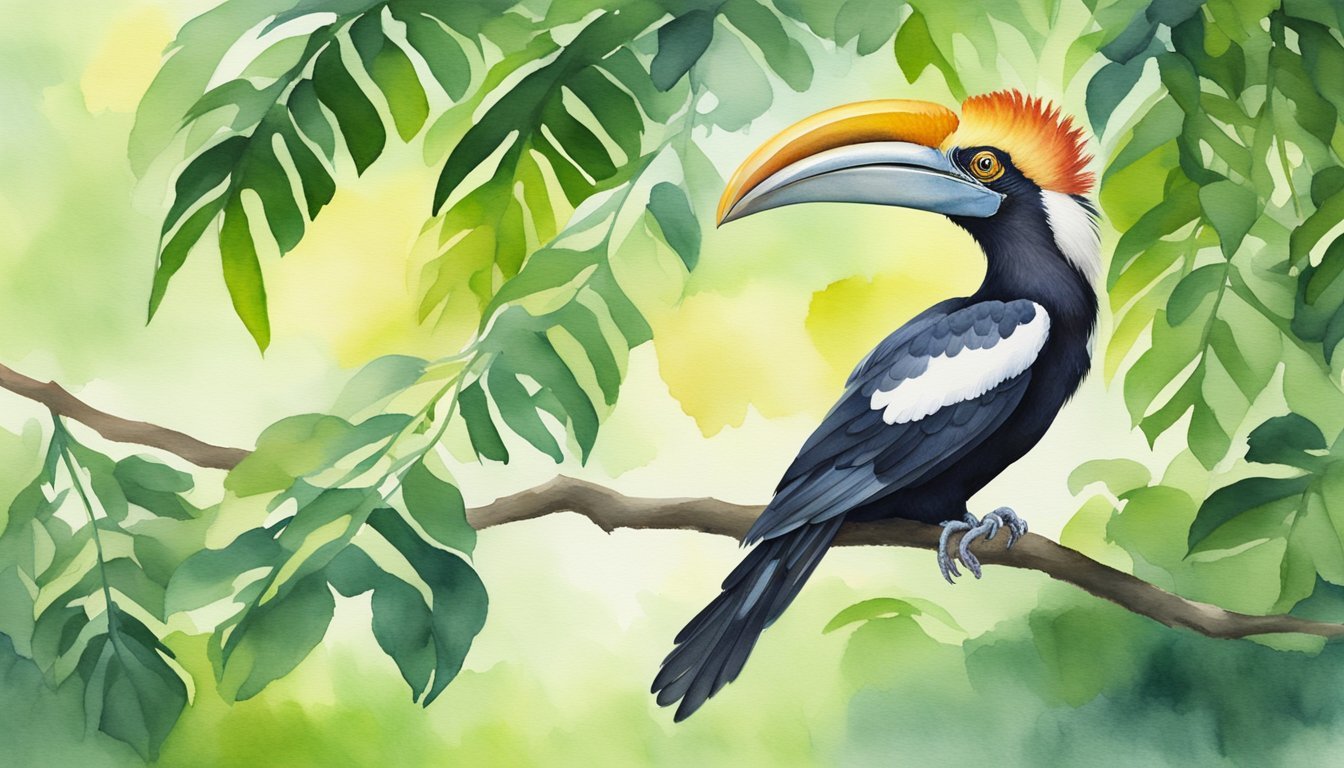Hornbill Overview

Hornbills are a unique group of birds belonging to the Bucerotidae family, encompassing a variety of species with distinct physical traits and widespread habitats. These birds are known for their striking features and interesting behaviors, making them fascinating subjects of study in the avian world.
Physical Characteristics
Hornbills are recognizable for their large, curved bill topped with a prominent casque in many species. The casque, made of keratin, serves different functions, from being a resonating chamber to playing a role in courtship displays. Within the family, there is considerable diversity in size, ranging from the small Red-billed Dwarf Hornbill at 32 cm in length to the impressive Southern Ground Hornbill with a wingspan reaching up to four feet. Feather colors and patterns also vary, with plumage that can be a combination of vivid hues and more subdued tones.
Species and Habitat
The Bucerotidae family consists of around 60 species, divided into two main groups: the Buceros (true hornbills) found in Asia, and the Bucorvus (ground hornbills), primarily located in Africa. The habitats of these birds are diverse, ranging from the dense tropical forests of Southeast Asia to the open savannas of Africa. For instance, the Helmeted Hornbill is known to inhabit the Malay Peninsula and Borneo, while the Southern Ground Hornbill is a resident of the open savannas of Africa. Natural cavities in trees and cliffs are often utilized by these birds for nesting sites.
Diet and Foraging
Hornbills generally have an omnivorous diet, feasting on a variety of fruits, insects, and small prey. Their foraging behavior is quite interesting, with the birds using their long bills to skillfully manipulate food. The Great Hornbill, for instance, has a diet that largely consists of fruit, but it will also consume small mammals and birds. These birds have also developed a unique method of food collection, where certain species collect multiple items, store them in their crop, and then later feed their young or mates.
Conservation and Behavior
Hornbills, distinct tropical birds with impressive beaks and casques, face challenges that threaten their survival. This section explores their unique reproductive behavior, the growing threats they encounter, and their complex social structures and methods of communication.
Reproductive Habits
Hornbills are known for their unique nesting behavior; most species are monogamous, with pairs often using cavities in trees as nests. The nesting process is remarkable: the female hornbill seals herself into the nest with a wall made of mud, droppings, and fruit pulp. She remains enclosed during incubation, relying on the male to provide food through a small slit. This secluded nesting period helps protect eggs and chicks from predators. Incubation periods vary depending on the species but can extend for as long as a few months.
Threats and Protection
Many hornbill species, such as the helmeted hornbill, face a concerning decline in their populations due to habitat loss, hunting, and the illegal ivory trade. Efforts to protect hornbills include enforcing anti-poaching laws and preserving their natural habitats. Several hornbills are categorized as vulnerable, endangered, or critically endangered on the IUCN Red List, with organizations at both international and local levels working on conservation strategies to halt their path towards extinction. Initiatives like the Hornbill Nest Adoption Program support conservation through community engagement and awareness programs.
Social Interaction and Communication
The social behavior of hornbills is as diverse as the birds themselves. They are known to live in flocks or in pairs. Their communication includes a wide range of calls, which are crucial for maintaining social bonds within flocks, establishing territory, and signaling alarm. Besides vocalizations, hornbills exhibit behaviors such as bill-grappling and aerial-casque butting as part of their social interactions. Arboreal species like hornbills often form symbiotic relationships with species such as dwarf mongooses, showcasing the intricate connections within their ecosystems.

